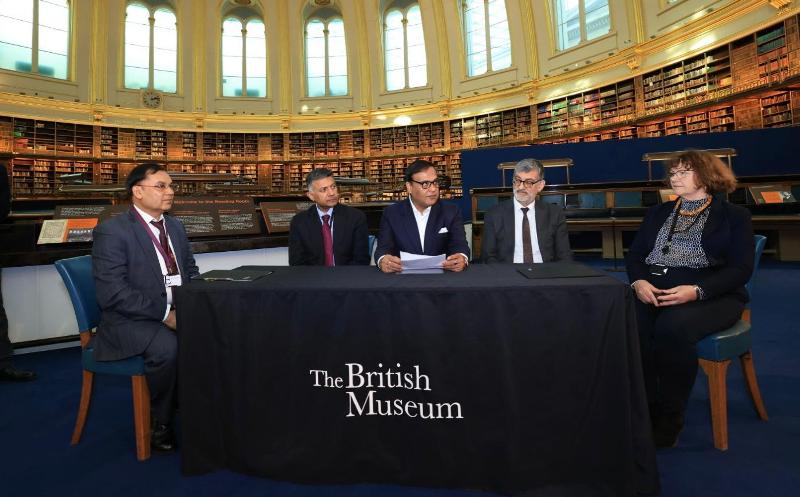Guwahati: The Assam government has signed a loan agreement with the British Museum in London to bring the Vrindavani Vastra—a 16th-century handwoven silk textile depicting the life of Lord Krishna—to the state for public display in 2027, Chief Minister Himanta Biswa Sarma said.
The Memorandum of Understanding (MoU) was signed in London, in the presence of Chief Minister Himanta Biswa Sarma, on Monday.
Created under the guidance of Assamese saint and cultural icon Srimanta Sankardeva at the request of Koch king Nara Narayan, the Vrindavani Vastra also contains verses composed by Sankardeva.
The exhibit, acquired in 1904 from Tibet by the British Museum, is nine-and-a-half metres long and is made of several pieces of silk drapes. It originally featured 15 pieces that were later assembled.
“The Vrindavani Vastra is not just a textile; it is a symbol of Assam’s rich spiritual and cultural heritage,” CM Sarma said in a post on X, calling its return “a red-letter moment” that reconnects Assam with its timeless legacy.
A priceless heritage returns to where it truly belongs, he said.
“The signing of the Letter of Intent with the British Museum to bring it back home under a loaning arrangement marks a red-letter moment which strengthens our connection to Assam’s timeless legacy,” the CM said.
This would be the first time that a portion of the textile will be on display in the state after it was taken away over at least a century ago, with fragments ending up as artefacts in museums across the world.
Before departing for London on Friday, the chief minister said the JSW group has played a key role in enabling the “homecoming” of the tapestry — a handwoven silk artwork depicting episodes from the life of Lord Krishna.
The group took the initiative of putting the Assam government in contact with the British Museum and is also taking the responsibility of building a museum of international standards in Guwahati to display the Vrindavani Vastra.
The Chief Minister said the Indian High Commissioner to the UK is closely involved in the process, and Prime Minister Narendra Modi is being kept updated as well.
The piece of textile was routed out of Assam through Tibet, with major fragments of it ending up on display in London and Paris museums, with some parts also in Boston and Los Angeles museums, Sarma said.
Calling the British Museum “a timeless repository of human civilisation,” Sarma said the upcoming exhibition represents a long-awaited cultural homecoming for generations of Assamese people who have never had the chance to view the historic textile.















